CMZoo’s four Nile hippos, Zambezi, Omo, Biko and Kasai, have had a busy summer and fall! If you’ve been following our newsletter updates and social media channels, you know that our three-month-old hippo, Omo, and his mom, Zambezi, have been bonding well and exploring all of the hippo spaces in Water’s Edge: Africa, while Omo grows like a weed. Zambezi’s sister, Kasai, and Omo’s dad, Biko, have also been staying busy meeting other Water’s Edge: Africa residents, participating in training and enrichment, and exploring their hippo home’s various yards and pools. Get the latest on our hippos with Water’s Edge: Africa keeper, Al, in this quick video update.
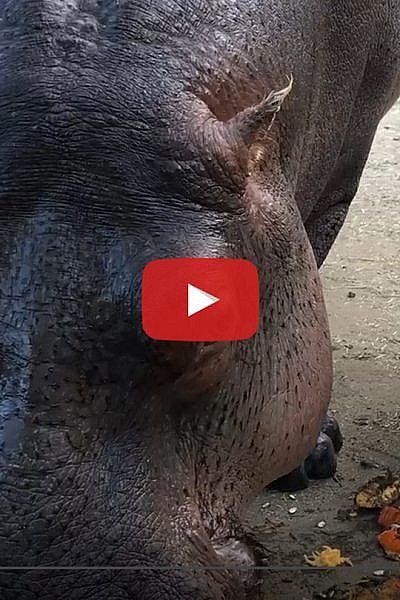

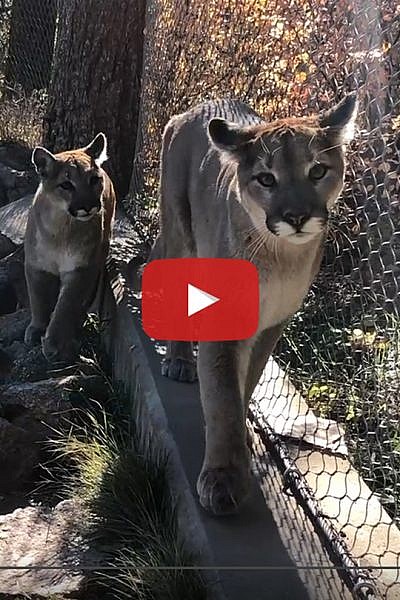

It’s been a year since our mountain lions moved in together, so join us for an update with Adira, Sitka and Koda! We’ll show you around their three yards and take a little hike up above their exhibit to get up-close with the three young lions. Rocky Mountain Wild Lead Keeper, Courtney, tells us how to identify each lion, why they came to live at the Zoo, and a little about their unique behaviors and preferences. Then, we’ll watch how they respond to their festive pumpkin enrichment.
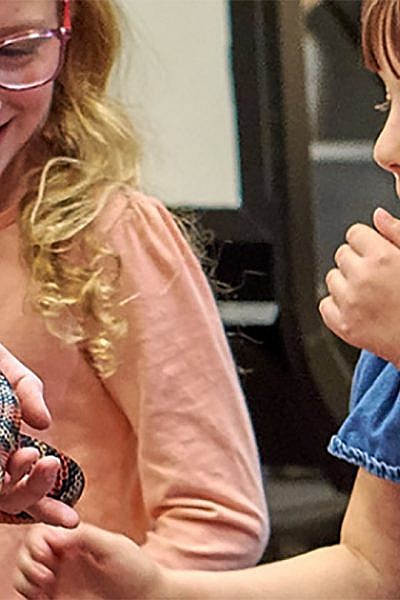

Colorado Springs has a robust community of homeschooling families, and Cheyenne Mountain Zoo has some new and exciting education opportunities for supplemental learning! Hands-On Homeschool offers unique curriculum and activities for seasoned homeschoolers, or those who are just getting started.
CMZoo’s monthly Hands-On Homeschool programs focus on Colorado Department of Education school science standards through inquiry-based, hands-on exploration, and investigation of wild animals and wild places. Programs include curriculum-based experiential learning that focuses on a nature- and/or animal-related topic.

This drop-off program is not only designed for students to connect with animals and the Zoo, but to each other as well. Adults are encouraged to explore the Zoo on their own, or take advantage of the 3-hour class to enjoy a little “me time.” Our Zoo staff will provide a safe, welcoming and educational environment for students of all ages to engage.
Every program is designed to be age appropriate and therefore splits into two different age groups: first through fifth graders and sixth through eighth graders. All programs include Zoo admission for the student, activities and up-close meet-and-greets with an animal ambassador.

The next theme for sixth- to eighth-grade students explores the wonderful features of some of the Zoo’s oddest and most unique species. From axolotls’ external gills to emus’ double feathers, students are sure to be captivated by their new knowledge. Stay tuned for the next theme for first to fifth graders!
Registration is required for all Hands-On Homeschool programs, and space is limited in these small-group programs. Visit cmzoo.org/homeschool to get more information or to register. If you are interested in customizing your very own Hands-On Homeschool program, please email [email protected].
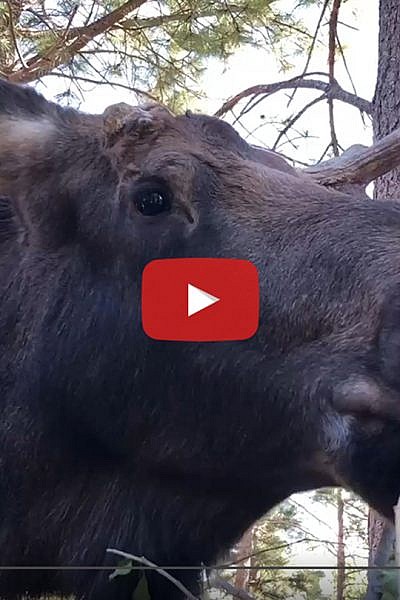

Join us for an update on one-year-old Alaska moose, Atka! Fall is a busy time for a moose, because they finish growing their antlers and enter ‘rut,’ which is breeding season in the wild. At the Zoo, we mimic the wild environment by giving Atka lots of items to spar with. Male moose, like Atka, would spar with other males for territory or female attention in the wild. Once breeding season is over, wild moose tend to go their separate ways, so Atka doesn’t share his space with other moose at the Zoo.
If you’ve missed our #AtkaAntlerUpdates this year, you might be wondering why he’s sporting a one-sided look this year. In June, young Atka knocked one of his antlers off, so his 2021 antlers are quite unique looking. In the next few months, Atka will shed his first set of antlers. Next spring, he’ll start growing a new set, and that cycle will continue throughout his life. Learn more at Atka and see his antler updates on his playlist, here: https://www.youtube.com/playlist?list=PLUd9bK-IbrIPyGTBSj3cxYeR6r-kz57I1.
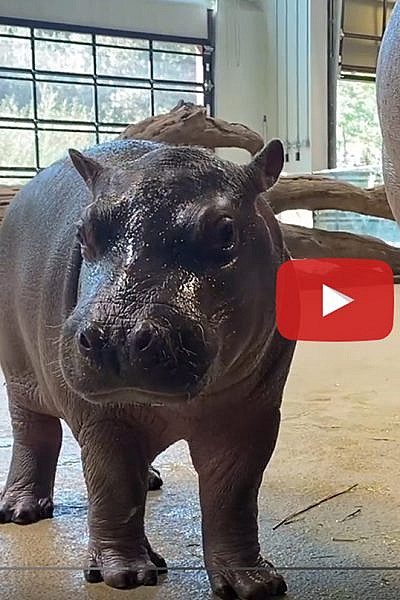

September was a big month for our quickly growing Nile hippo calf. He got a name, explored new spaces and tried new foods. One thing didn’t change for young Omo, though: his love for naps.
Join Water’s Edge: Africa keeper, Grace, for an update on our two-month-old calf, and hear about how Omo’s following in mom’s footsteps literally and figuratively. Zambezi is a confident hippo, and her little boy is showing signs he’ll be just the same!
Check out Omo’s complete video playlist, here: https://www.youtube.com/playlist?list=PLUd9bK-IbrIMxpwuRlrLaZfU4fFwB9cPG.
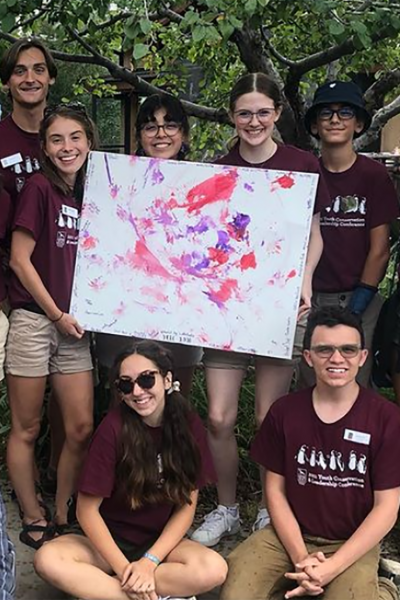


If you have visited Cheyenne Mountain Zoo during the summer, you have probably seen teenagers in light blue t-shirts, contributing to the success of almost every area of the Zoo. These teens play an active role in engaging with guests, caring for animals, and gaining life skills like public speaking and professionalism. Summer might be the busiest time for teens to participate in these experiences, but there are other opportunities during the traditional school year, as well.
The CMZoo Teen Program also offers a winter session from Nov. 12, 2021 to Feb. 12, 2022. Applications for this four-month session will be accepted at cmzoo.org/teenprograms from Saturday, Oct. 16 through Monday, Oct. 25, 2021. Teens ages 12 to 18 gain experience with animal care, conservation, leadership and interpretation, and they connect with nature through interactive experiential education sessions on the Zoo’s Nature Trail. They’ll also see behind-the-scenes areas of the Zoo and learn alongside CMZoo’s team of animal keepers. Space is limited for this session, and applications are required.

For teens who would like to experience CMZoo’s Teen Programs without a long-term commitment, Community Programs are a great place to start. Community Programs are one-time sessions including offerings like Wilderness Survival Skills, Raptor Workshops (learning all about birds of prey and how to spot them in the wild), evening Zoo tours and Starlight Safaris, and Animal Photography. Each program is designed for teens to connect with the Zoo and nature, while bonding with each other with experiences that are truly unique. Learn more about each program and sign up at cmzoo.org/teenprograms.
Stay tuned to cmzoo.org/teenprograms, because there are always new and developing programs being launched for the 12-to-18-year-old age group. Whether it’s workshops on conservation and life skills, or internship opportunities for high schoolers, the website is the best place to find it all.
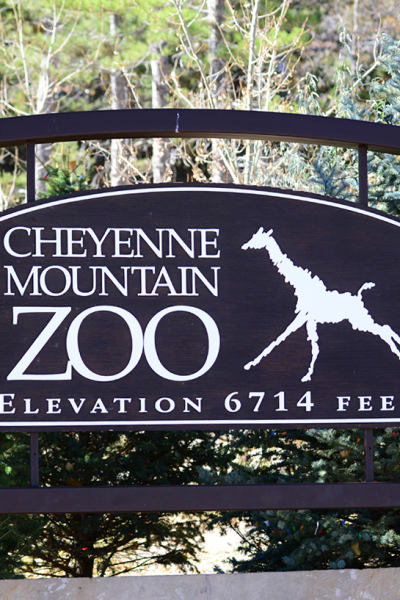

Generous donors have contributed $12 million to Cheyenne Mountain Zoo’s next capital campaign, which seeks to support a variety of Zoo improvements.

“We’re excited to announce our next capital campaign, called ‘ELEVATE,’” said Kelley Parker, director of development at Cheyenne Mountain Zoo. “Unlike previous capital campaigns, which typically focus on improvements for one exhibit or zone of the Zoo, this campaign seeks to further elevate our animal care standards and guests’ experiences throughout the Zoo.”
ELEVATE’s fundraising goal is $13.5 million. Thanks to private donations, the Zoo is just $1.5 million shy of that goal. Now, the Zoo is inviting the public to contribute.
CMZoo is a nonprofit organization and one of very few zoos accredited by the Association of Zoos and Aquariums in the country that does not receive tax support. The support of the Colorado Springs community is vital to the Zoo’s continued ability to upgrade facilities.
Cheyenne Mountain Zoo has been consistently named one of the top 10 zoos in North America by USA TODAY’s 10Best Readers’ Choice Awards and TripAdvisor. The Zoo is known for its top-notch animal care, incredible up-close animal experiences, leading conservation practices, educational programs, and natural setting on the side of Cheyenne Mountain. As CMZoo approaches its 100th year, in 2026, ELEVATE’s ambitious goals will solidify a foundation for the next 100 years.
“Thanks to our dedicated private donors, we are very close to meeting our fundraising goal,” said Parker. “And we know we can meet that goal with the help of our community. A donation to ELEVATE means you’re contributing to the next hundred years of elevated animal care, conservation and guest experiences at Cheyenne Mountain Zoo.”
ELEVATE aims to support a variety of Zoo focuses:
- Advance animal care by improving existing animal exhibits, including plans to update African Rift Valley, which opened in 2003. ELEVATE will raise funds to design new homes for Western lowland gorillas, orangutans and more, but does not include construction fundraising. The next animal-centric capital campaign, after ELEVATE, will focus on construction costs to replace existing homes for our great apes.
- Improve animals’ fresh food security by growing the majority of needed lettuce and other high-demand produce at the Zoo. CMZoo’s horticulture team is already testing an on-site hydroponic lettuce grow pod, made from a recycled shipping container, and will add more after successful testing. This plan also includes building a larger and more easily accessed hay barn.
- Expand the entry plaza with an updated look and feel. Guests and members will enjoy more space and beautiful mountain rustic aesthetics as they start their Zoo day.
- De-emphasize the main road’s impact on guest experiences by rerouting traffic. ELEVATE will raise funds for a more peaceful meander from the Zoo’s entrance up to Australia Walkabout. Cars visiting Shrine Road or Broadmoor Cloud Camp, above the Zoo, would enter the Zoo behind Water’s Edge: Africa, and cross pedestrian paths only briefly, instead of continuously sharing the main road with foot traffic. This will also create space for new future animal habitats.
To learn more about the ELEVATE capital campaign and to make a contribution, please visit cmzoo.org/elevate.
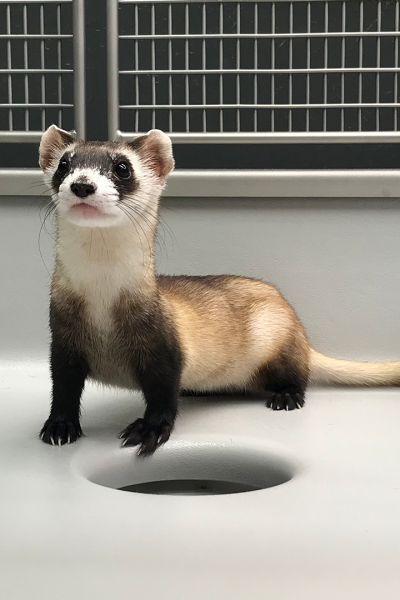

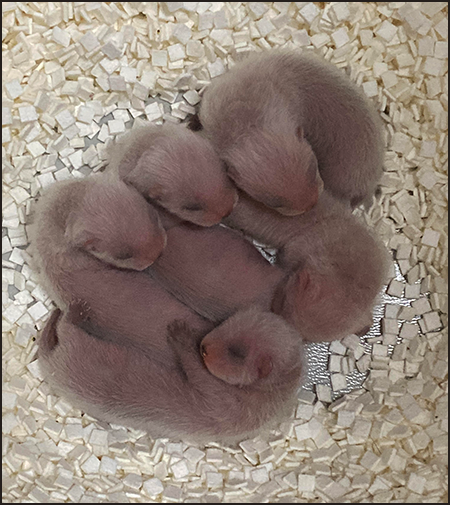
It’s easy to see why the black-footed ferret (BFF) is considered the ambassador of the prairie ecosystem. With its black-and-white bandit-esque markings, small stature and curious demeanor, many consider this species adorable. That’s true; but they’re also highly trained hunters with a big job: restoring balance in their ecosystem while helping their own species recover from near extinction. Luckily, the ‘Ghosts of the Prairie’ have some help.
During the western frontier exploration in the early 1900s, cargo ships from Europe and Asia inadvertently brought sylvatic plague to North America. The spread of this disease, combined with poisoning and eradication programs led by newly settled farmers and ranchers, who saw prairie dogs as pests, drastically reduced the prairie dog population. Because prairie dogs are black-footed ferrets’ main food source, the BFFs’ population declined dramatically. By the 1980s, black-footed ferrets were thought to be extinct.
Sept. 26, 2021, marked the 40-year anniversary of the rediscovery of this spunky species. On that day in 1981, a ranch dog named Shep caught a black-footed ferret. Shep’s catch led to the discovery of a small population of BFFs in Meeteetse, Wyoming. Since then, zoos, U.S. Fish and Wildlife and other organizations have banded together to breed, prepare, release and monitor black-footed ferrets to increase the population. Numbers fluctuate, but recent reports estimate 350 BFFs are thriving in the wild, thanks to this program.
This year, the CMZoo conservation team welcomed 15 healthy BFF kits, six of which will be released into the wild in the coming months. Since 1991, when CMZoo established its breed-and-release black-footed ferret program, the team has bred 585 BFF kits.
“It’s really amazing to be part of a conservation program that impacts a native local species,” said Jeff Baughman, CMZoo conservation coordinator. “Each breeding season, we learn more about their species and use what we’ve learned to benefit them in the wild. This year, we focused on developing their hunting and defense skills by providing new enrichment and feeding opportunities.”
Since the BFFs are intentionally kept away from guests and the keepers who care for them to preserve their wild instincts, their enrichment looks different than most animals at CMZoo.

“We built new tunnel systems for them to navigate, which we hope will better prepare them for their underground lives in the wild,” said Baughman. “They’re nocturnal and spend most of their time hunting prairie dogs, which are about three times the size of black-footed ferrets. We want them to be agile, curious, confident and creative individuals as they explore prairie dog tunnels in the wild.”
BFF ‘boot camp’ is the next step for the six born-to-be-wild CMZoo ferrets. Boot camp puts their survival skills to the test in a contained prairie setting. Biologists monitor the BFFs during boot camp, and if they see any individuals are struggling to hunt, find shelter, or defend themselves, they’ll be returned to human care. Those who prove they can live wild will be released into the prairie beyond the contained boot camp setting.
Although guests can’t visit our breeding BFFs or their kits, they can visit Yippee, a black-footed ferret ambassador who lives in The Loft at CMZoo.
Every visit to CMZoo is conservation in action. Through CMZoo’s Quarters for Conservation program, by which 75¢ of every admission is dedicated to frontline conservation efforts like this, guests can enjoy a day on the mountain with their favorite animals and support important programs dedicated to saving wildlife and wild places. Since 2008, when Q4C started, CMZoo’s guests and members have contributed $3.4 million to conservation projects worldwide.
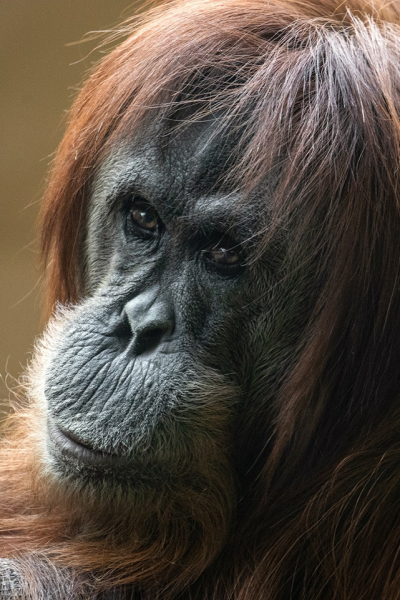


With spooky season just around the corner, many people are stocking up on candy. It may come as a surprise, but the type of candy you purchase has an impact on wild orangutan habitats because it likely contains palm oil.
Palm oil is a form of edible vegetable oil obtained from the fruit of the African oil palm tree. Palm oil is widely used in about half of the products we buy, ranging from food to cleaning supplies to cosmetics and more. As the demand for palm oil increased, unfortunately, so did unsustainable farming practices. Rainforests were cleared to quickly make way for more oil palm crops. It is grown in tropical areas, including Borneo and Sumatra, which are home to orangutans and other unique endangered species, like Sumatran rhinos and tigers.
Palm oil, when farmed responsibly, is really efficient compared to other edible oils. Oil palm trees – the plants palm oil comes from – produce four to ten times more oil per hectare than other popular oil crops like soy, olive, rapeseed and coconut. Boycotting palm oil would lead to increased demand for these other edible oils that require more land and resources to be cultivated.
Additionally, for many of the people who live in Indonesia and Malaysia, palm oil cultivation is their main source of income. If these people cannot rely on palm oil cultivation then they could turn to a different economic endeavor such as planting rubber trees, planting a less efficient oil crop, or even, unfortunately, illegal wildlife trading and hunting. Asking for sustainable palm oil means asking for the most efficient oil crop to be grown and harvested correctly with the least amount of impact on our planet.
“Palm oil isn’t the enemy, so we don’t think boycotting is the answer,” said Chelsea Wellmer, palm oil and conservation programs coordinator at CMZoo. “Boycotting is really difficult because there are over 600 names for palm oil on ingredient labels. You could be eating and using palm oil every day without being aware of it. Learning about palm oil and adding it to your list of things to consider as an ethical and conscientious consumer can make a big difference. With our free shopping app, we’ve made that easy for consumers in the U.S. and Canada.”
Cheyenne Mountain Zoo has been integral in promoting the worldwide effort to support sustainably produced palm oil. The Zoo’s free sustainable palm oil shopping guide mobile app, which consumers can use to discover their favorite companies’ level of commitment to using sustainable palm oil, has now been downloaded over 155,000 times and is being promoted by other zoos across the country.
To download the free app, search “Cheyenne Mountain Zoo palm oil” in the Apple App Store or Google Play, and look for the logo with the green orangutan. Once the app is installed, consumers can scan the bar codes of their favorite products to see how the Zoo has rated that company’s progress towards sourcing 100% certified sustainable palm oil.
All products listed in the app are from companies that are members of the Roundtable on Sustainable Palm Oil (RSPO). The Roundtable on Sustainable Palm Oil (RSPO) has established global standards for environmentally and socially responsible palm oil, and engages stakeholders as part of the solution to make sustainable palm oil the norm.
As long as the company is in the app, they have made a commitment to work towards using only certified sustainable palm oil that is deforestation-free. There are three ratings on the app:
- Green – excellent
- Yellow – good
- Orange – needs improvement
 The best way to help protect wild orangutan habitats from destruction due to unsustainable palm oil production is to show large companies that consumers will choose products made by companies that have committed to sustainable production over those that have not.
The best way to help protect wild orangutan habitats from destruction due to unsustainable palm oil production is to show large companies that consumers will choose products made by companies that have committed to sustainable production over those that have not.
“We understand there are a myriad of issues to consider as a conscientious consumer,” said Wellmer. “As animal advocates and palm oil experts, our goal is to arm consumers with the knowledge that this is another important aspect to consider as they make decisions.”
CMZoo’s palm oil team can also help consumers encourage their favorite companies to make the commitment to using sustainably produced palm oil in their products.
“If there’s a company that you love, because they meet the rest of your ethical standards, but they’re falling short of protecting wild places through sourcing sustainable palm oil, we can help,” said Wellmer. “Our online palm oil resource tool kit has free letter-writing resources that we have seen make an impact with companies. Information is power, and we can help companies learn why they should commit to using only sustainable palm oil in their products.”
Next time you’re visiting CMZoo’s orangutans at Primate World, check out the palm oil resources and activities available. You can also learn more about the use of certified sustainable palm oil and download the Zoo’s free palm oil shopping app by visiting cmzoo.org/palmoil.
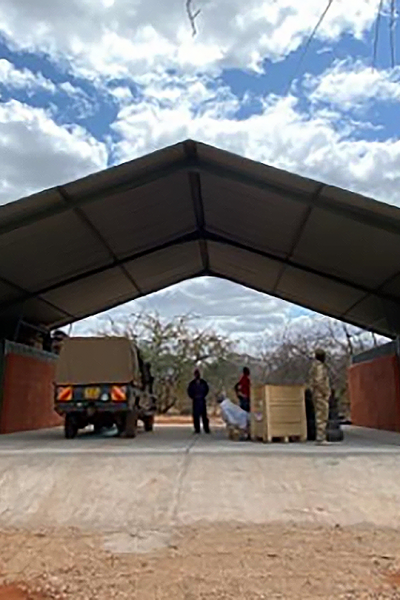


Tsavo Trust is a field-based non-profit organization in Africa that uses aerial surveillance and on-the-ground field efforts to protect wildlife in Tsavo National Park, the largest national park in Kenya. Through the Quarters from Conservation program, Cheyenne Mountain Zoo’s members and guests have supported Tsavo Trust since May 2016.
The organization was founded to help protect the last of the ‘big tuskers,’ which are likely the last viable genetic pool of African elephants with tusks weighing more than 100 pounds each. The park is also home to a number of black rhino sanctuaries established by the Kenya Wildlife Service (KWS) and supported by the Zoological Society of London. The black rhino is critically endangered, due primarily to illegal poaching for their horns.
In partnership with the Kratt Family Foundation, CMZoo continues to support Tsavo Trust’s mission by funding ongoing infrastructure development and community outreach projects. Supporting staff salaries and on-site maintenance allows the team on the ground to more efficiently protect the animals at risk. Last year, CMZoo sent support for clean water wells for Tsavo Trust headquarters and a nearby community, which helps bridge relationships with locals who can help Tsavo Trust identify emerging issues that could impact wildlife in the area. This was funded by the Zoo’s daily elephant and rhino feedings, which are available during summer months when weather permits.

This year, CMZoo’s funding has helped support a full-time business administrator, a full-time conservation officer and low-flying reconnaissance pilot and a newly completed workshop, where the team can efficiently maintain its fleet of 12 ground vehicles. Keeping those all-terrain vehicles in working order means the team can effectively reach elephants and rhinos that need them.
“Imagine having your headquarters in the middle of Tsavo National Park,” said Dr. Liza Dadone, CMZoo vice president of mission and programs. “You’re protecting roughly 16,000 miles of land that is vital to the survival of the last of this incredible population of African elephants, but the lack of services can present obstacles that could mean life or death for an elephant. If a vehicle broke down in the past, it could have caused a significant delay in getting to the elephants in the field. Now, Tsavo Trust teams can maintain their vehicles on-site and get where they’re needed – with the elephants and rhinos in the wild.”
From January to June 2021, Tsavo Trust flew more than 28,000 miles above Tsavo National Park, monitoring elephants, rhinos and other wildlife from the skies. The Tsavo Trust airplanes give their team the best vantage point for identifying threats to the animals, which are relayed to Tsavo Trust protection and monitoring teams, on foot and in vehicles, who can take action on the ground.
“I hope our guests can feel the impact they’re making through our partnership with Tsavo Trust,” said Dr. Dadone. “By visiting the Zoo, you’re sending financial support directly to the team who keeps a watchful eye on these magnificent animals and anyone who might want to harm them.”
In that same period, Tsavo Trust has made 28 arrests, including poachers and ivory dealers, and recovered 417 snares and traps.
Every visit to the Zoo is conservation in action. Cheyenne Mountain Zoo and its supporters, guests and members have raised more than $3.4 million since the Zoo’s Quarters for Conservation program launched in 2008.